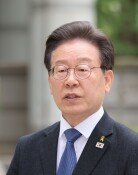Govt to cut electricity bills for schools
Govt to cut electricity bills for schools
Posted May. 26, 2014 03:57,
Electricity bills for schools in Korea are likely to fall starting next month. Electricity bills for elementary, middle and high schools across the country will be cut by 4 percent from next month and the Education Ministry will provide 100.4 billion won (979 million U.S. dollars) to schools for electricity costs. The decision was triggered by teachers, parents, and civic groups who pointed out that students suffer extreme heat or coldness in classrooms due to the financial issue of schools.
The Trade, Energy and Industry Ministry said on Sunday, We have approved the new tariff system of Korea Electric Power Corporation in which the electricity bill for elementary, middle and high schools in Korea is cut by 4 percent from June 1. This applies to around 11,700 schools across the country, but not to universities, museums, libraries, and art galleries.
The Education Ministry will send 100.4 billion won (979 million dollars) for school operating expenses to cover their electricity bills as part of its efforts to mitigate schools` financial burden for electricity. Schools have been using more electricity due to after school programs, care programs for low-income children, and the use of school facilities by local residents. Last year, 11,658 schools paid a total of 536 billion won (522 million dollars) for electricity.
The Education Ministry estimates that schools could save 134 billion won (130 million dollars) per year on electricity bills on the back of the discount on electricity costs and financial support from the ministry. An average electricity bill per school was 45.9 million won (44,700 dollars) last year, but the decision is likely to reduce the bill by 25 percent to 34.3 million won (33,477 dollars) this year. This is the result of the steady demand for lower electricity costs by teachers, civic groups, and lawmakers, a source from the Education Ministry said. If the subsidy is applied to the new tariff system, each school would be able to use around 50 percent more electricity during the peak season, from June through August and from December through February.
Electricity costs for education purposes have been slightly reduced while they are still higher than those for agricultural or industrial purposes, the Korean Federation of Teachers Association said. To address the issue, the electricity bills for education purposes should be further reduced and the government needs to provide support steadily.
Headline News
- Israel prepares for retaliation against Iran
- Samsung reclaims top spot, surpassing Apple in smartphone market
- 77% of Koreans in 20s and 30s are 'Kangaroo Tribe' due to job crisis
- KBO referees embroiled in controversy over ABS decision concealment
- Inflation, oil price surge put double shock on global economy







